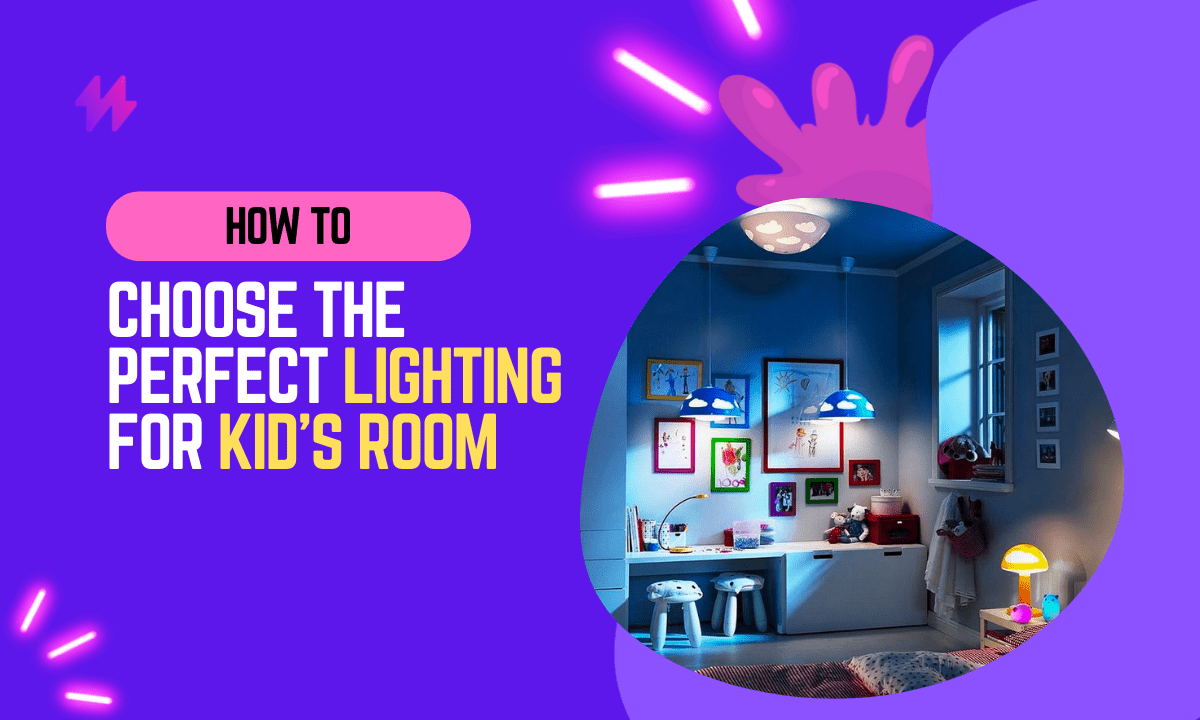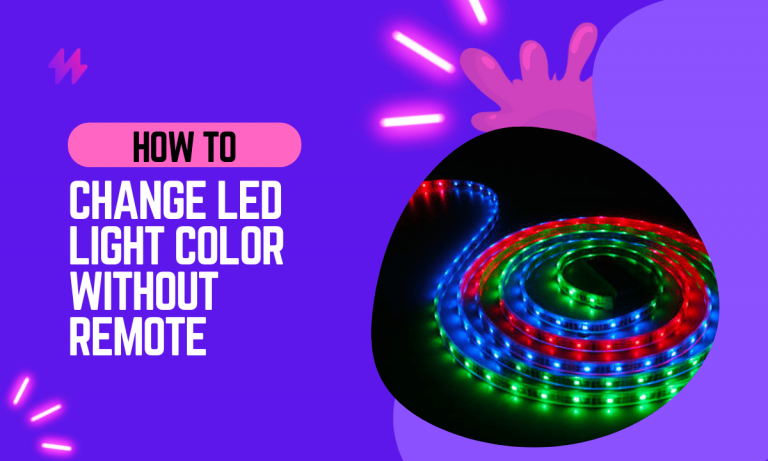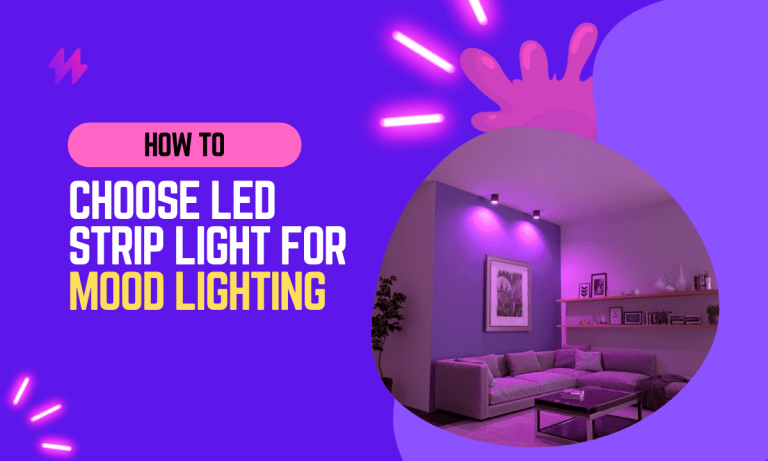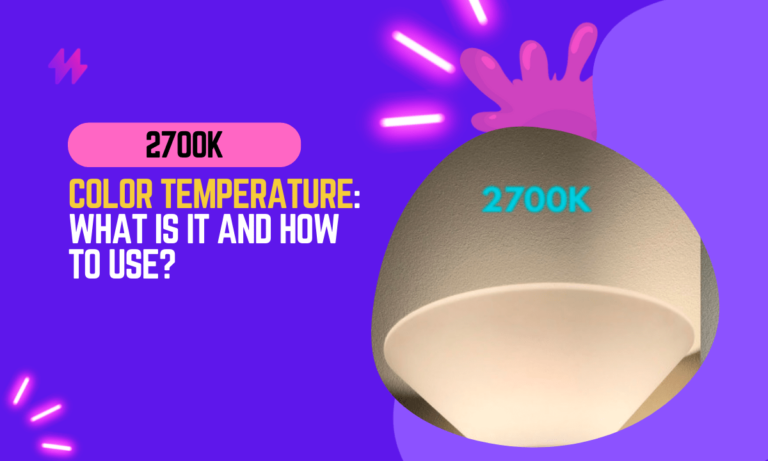How to Choose Lighting for Kids Rooms in 2023?

Your bedroom is your kingdom when you’re a kid. It’s the one place where you can rule and let your imagination run wild. But it also has to serve as a sleeping, studying, and relaxing space. So parents have the tricky task of creating the perfect atmosphere for their kids’ room—even down to details like light fixtures.
Did you know that the right lighting in your kids room is crucial for their health and well-being? It’s true! In this blog post, we’ll discuss the importance of lighting in kids rooms and how to choose the right type of light for your child.
Choose the Right Light Fixture for your child’s room
When it comes to choosing a light fixture for your child’s room, there are a few things you’ll want to keep in mind. First, consider the size of the room. If it’s small, you’ll want to choose a light fixture that doesn’t take up too much space. You’ll also want to think about the ceiling height. If the ceilings are low, you’ll want to avoid hanging lights that are too long or bulky as they can make the room feel even smaller.
If your child likes to read in their room, you may want to choose a wall sconce or reading lamp that can be mounted near their bed or desk. This will give them the perfect amount of light for reading without being too harsh. For a more general light fixture, you may want to choose something like a ceiling fan with a built-in light or a chandelier. Just be sure that the light fixture you choose is appropriate for the size and height of the room.
Choose the Right Type of Light Bulb
When it comes to choosing light bulbs for your child’s room, you’ll want to make sure you choose the right type of bulb. CFL (compact fluorescent) bulbs are a great option as they use less energy than traditional incandescent bulbs and last longer. LED bulbs are also a good option as they’re even more energy-efficient than CFLs and last even longer.
You’ll also want to consider the color temperature of the light bulbs you choose. Warm white light bulbs have a yellowish hue and are relaxing, while cool white light bulbs have a blueish hue and are more energizing. Choose the color temperature that you think will work best for your child’s room.
Make sure there is Enough Light in the room
In addition to choosing the right type of light bulb, you’ll also want to make sure there is enough light in the room. This can be tricky as you don’t want the room to be too bright and overwhelming, but you also don’t want it to be too dark and dreary. A good rule of thumb is to have at least 50 watts of light per 100 square feet of space.
If you’re not sure how much light you need, try this simple test: turn off all the lights in the room and go into another room. Once you’re in the other room, have someone turn on the lights in the child’s room one at a time until you can see the floor clearly from the doorway. That’s the minimum amount of light you’ll need in the room.
Choose the Right Color of Light for your child’s room
Another thing to consider when choosing the lighting for your child’s room is the color of the light. As we mentioned before, there are two main types of light bulbs: warm white and cool white. Warm white light bulbs have a yellowish hue and are relaxing, while cool white light bulbs have a blueish hue and are more energizing. Choose the color temperature that you think will work best for your child’s room.
You can also experiment with different colored light bulbs to create a fun and festive atmosphere in your child’s room. Red light bulbs can create a cozy feeling, while blue light bulbs can make the room feel calm and serene. Green light bulbs are perfect for creating a nature-inspired space, and yellow light bulbs are great for adding a touch of warmth.
Decorate with lights to create a fun atmosphere

In addition to choosing the right type of light bulb and making sure there is enough light in the room, you can also decorate with lights to create a fun atmosphere in your child’s room. String lights are a great way to add some whimsy to the space, and they come in all sorts of colors and styles. You can even find string lights that are shaped like animals or flowers.
With a little bit of thought and planning, you can choose the perfect lighting for your child’s room. Just be sure to keep their needs and preferences in mind, and you’ll be sure to find the perfect solution.
Conclusion
In conclusion, choosing the right lighting for a child’s room in 2023 requires a blend of safety, functionality, and creativity. As lighting profoundly impacts a child’s environment, it is essential to select fixtures and bulbs that ensure safety and enhance their living space. LED lights are a preferred choice due to their energy efficiency and low heat emission, making them safer for young children who might accidentally touch them. Additionally, opting for fixtures with secure, sturdy designs and shatterproof covers can prevent accidents, making the room safer for playful young inhabitants. It’s also important to consider the ease of use and accessibility for children, incorporating elements like reachable switches or remote controls to allow them to adjust lighting independently.
Moreover, the lighting chosen should cater to the various activities that take place in a child’s room, from studying to playing and resting. Incorporating layers of light such as ambient, task, and accent lighting can create a versatile space that adapts to different needs throughout the day. Ambient lighting provides a general illumination, while task lighting focuses on specific areas like reading nooks or study desks. Accent lighting can be used to highlight or feature certain aspects of the room, adding a sense of fun or creativity, which is particularly appealing in children’s spaces. Consideration of color temperature is also crucial; warmer tones are conducive to relaxation and are generally recommended for lighting in kids’ rooms as they provide a cozy, calming atmosphere conducive to sleep. By thoughtfully selecting lighting that is safe, functional, and stimulating, parents can create a vibrant and nurturing environment that supports their children’s growth and well-being.






